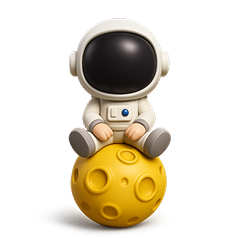
- Article
Money Isn’t Always the Best Motivator
Why smart rewards go beyond cash & how to build a winning incentive mix.
In the world of sales and service, rewards aren’t a luxury – they’re a management tool. Many team leaders already know that the right incentive can lift morale, shift behavior, and drive measurable results.
But is money always the key?
Not necessarily.
What Truly Drives Performance
At the heart of every incentive is behavioral economics – the study of how people make decisions. Research shows that feedback itself – not just rewards – is one of the most powerful drivers of behavior.
A study by Deci, Koestner & Ryan (2001) found that while external rewards (like bonuses) can provide short-term motivation, they may undermine intrinsic motivation if not used properly. In contrast, rewards that are accompanied by positive feedback, a sense of meaning, or an enjoyable experience can improve performance over time.
The takeaway: immediate feedback, public recognition, and a positive experience matter just as much as – and sometimes more than – the reward itself.
The 4 Circles of Workplace Rewards
To truly motivate your team, it’s important to understand the multiple layers of rewards already at play within your organization:
- Base Salary
The foundational reward – employees show up, complete their expected tasks, and receive regular compensation.
- Personal Productivity Incentives
Commissions, performance bonuses, overtime pay, or rewards for initiative. These directly link output to recognition.
- Campaign-Based Rewards
Temporary competitions, challenges, or project-based bonuses that reflect strategic priorities or short-term goals.
- External or Layered Rewards
Sometimes, rewards come from outside the organization – like a manufacturer incentivizing retail employees to promote their products. Or through platforms like Qwan, where employees earn digital coins redeemable for personal gifts – offering double the incentive: once from the employer, once from the app.

Understanding these layers helps leaders spot gaps and opportunities to enhance motivation.
Not Just About the Money
Cash is the classic reward but it’s far from the only one.
In fact, there are three core types of rewards, each with its own pros and cons:
Financial Rewards
Simple, immediate, and effective – but short-lived. A 2017 Gallup study found that the motivational impact of monetary bonuses tends to last around nine months on average.
Tangible Rewards
Physical prizes like gadgets, dinners, or even travel. These can create memorable moments, but often feel out of reach for the majority – typically reserved for top performers. This can create disillusionment or disengagement among the rest of the team.
Status-Based (Ego) Rewards
These don’t cost money but offer social recognition. Think: sitting in the manager’s chair for a day, receiving personalized coffee from the boss, or having the manager wash the employee’s car. These small gestures can build culture, trust – and sometimes outperform cash in driving engagement.
Building the Right Mix
If there’s one key lesson here, it’s this: no single reward motivates everyone.
To truly drive behavioral change and improve productivity, great managers don’t just choose a prize – they design an incentive ecosystem. One that aligns with the company’s goals while recognizing individual preferences, personalities, and motivations.
The smartest incentive plans combine:
- Immediate and long-term motivators
- Cash and experiential rewards
- Team celebrations and personal recognition
And this is exactly where technology steps in. Tools like Qwan help organizations design and run daily competitions, track performance KPIs, and deliver positive feedback – making motivation personal, visible, and ongoing.
In Summary
If you’re aiming for real impact – don’t just ask what can I give them?
Start by asking what truly motivates my people?
Sometimes, it’s not about the next bonus check – but rather a cup of coffee, a smile, and the feeling of being seen.
* This article is based on insights gathered by our Systems Analysis and Customer Success teams, following dozens of interviews with clients. Organizations that performed this type of internal review prior to implementation entered the process with clearer expectations and significantly improved their project success rates.




